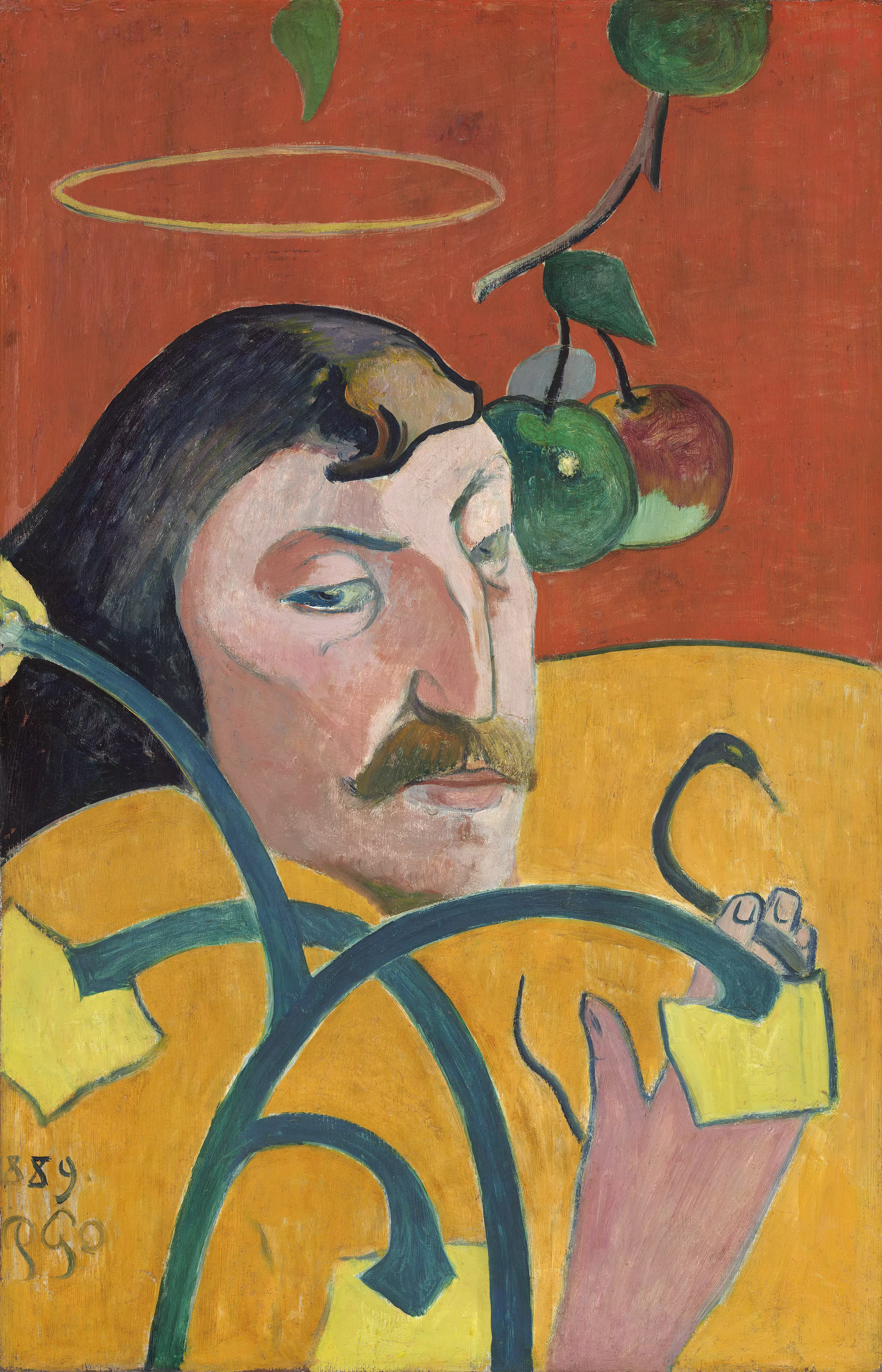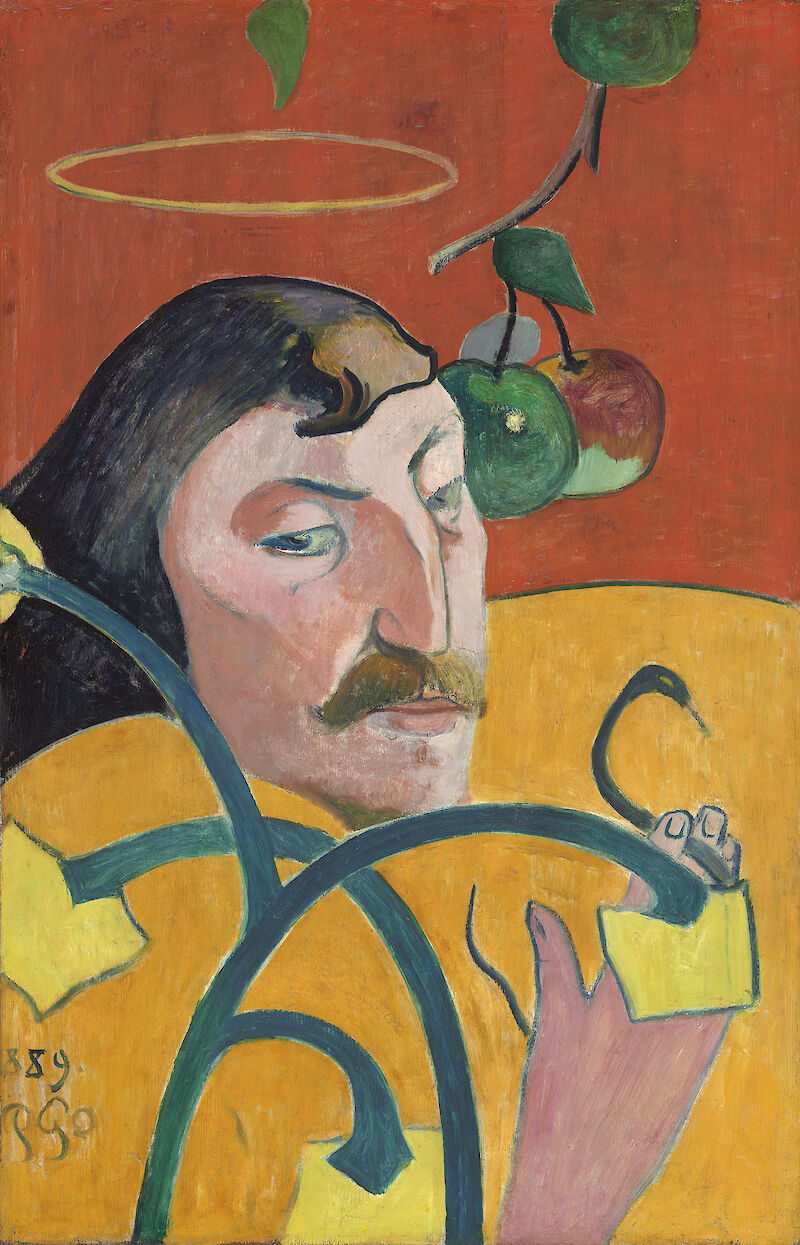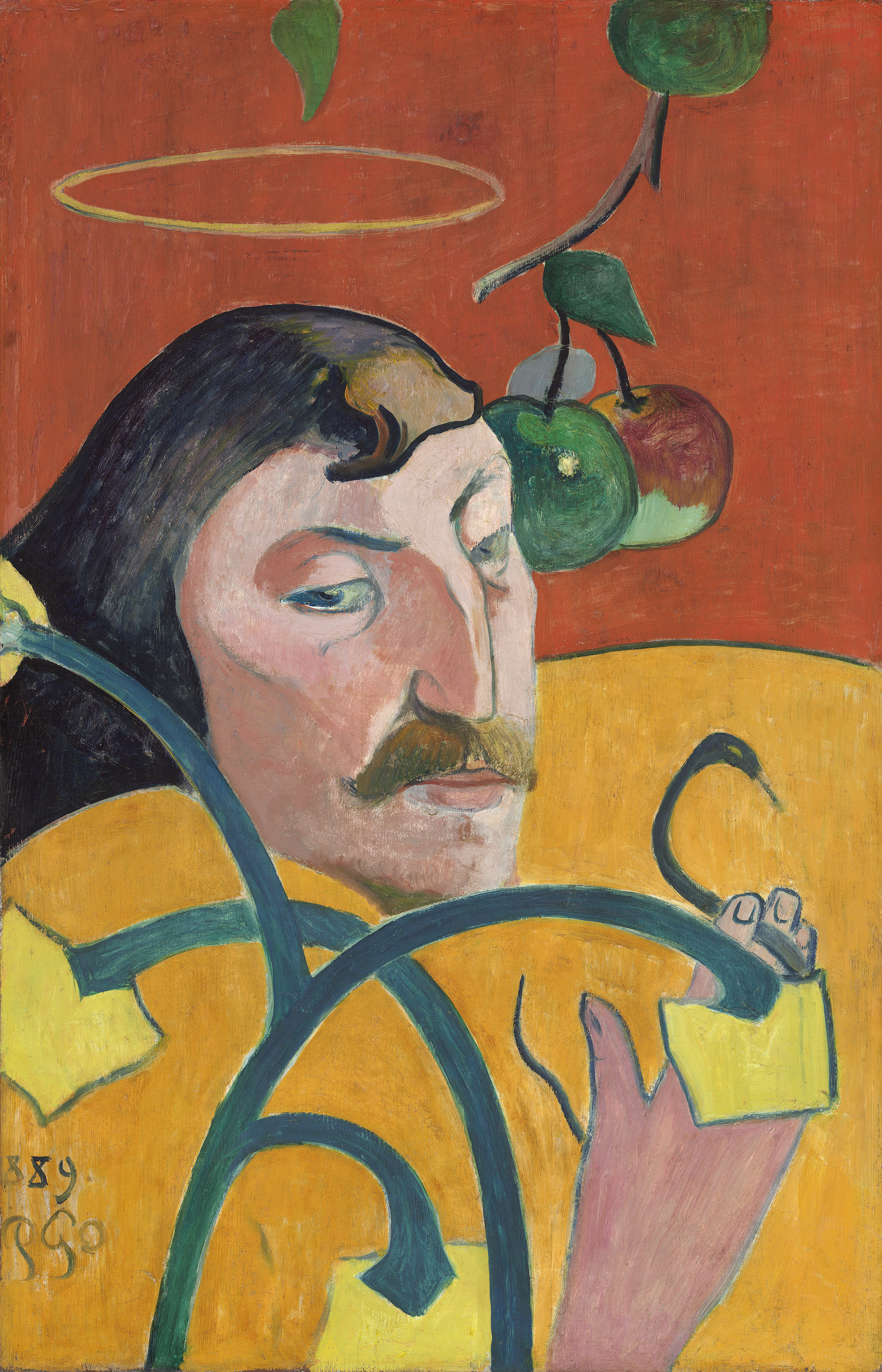


If you know anything about Paul Gauguin, seeing the syphilitic, philandering letch with a golden halo floating above his head is weirdly frustrating. What kind of narcissistic ego trip is this? What the hell, Gauguin?
A quick refresher on the halo: one of the most distinctive and longstanding motifs in Christian iconography, the halo is a sort of spiritual radiance that marks persons of the highest degree of moral purity, including saints, martyrs, and naturally, Jesus Christ himself. Halos were first depicted as rays of golden light emanating out from the head, and sometimes the whole body of the holy person, but over time the icon was simplified into a single delicate golden ring floating lightly a few inches above the head, parallel to the ground, as we see above.
Back to Gauguin. Old Paul is infamous today for leaving his family to move to Tahiti where he bought and impregnated a 13-year-old girl. Not halo material. But at the time of this self-portrait, Gauguin was still in France, fresh off his nine week stay in Arles with Vincent van Gogh that ended with Van Gogh’s famous ear-removal. Recent work by historians Hans Kaufmann and Rita Wildegans suggests that Gauguin, famous for his volatile temper and penchant for swords, cut off Vincent’s ear himself during an argument over a local prostitute, then cowed his wounded friend into silence. In a letter to his brother, Vincent later wrote “Luckily Gauguin ... is not yet armed with machine guns and other dangerous war weapons.”
After the visit’s bad end, Gauguin left Arles, crashing with friends in Paris, Pont-Aven, then finally setting up shop in the coastal fishing village of Le Pouldu, in the Buvette de la Plage inn. At the Inn, Gauguin met up with his friend and protégée, the dutch painter Meijer de Haan. Here the two artists seem to have staged a competition of sorts, aiming to seduce Marie Henry, the innkeeper. In the process, the two artists used the inn as their canvas, painting on anything and everything in all genres. It was a tremendous outburst of creativity that ended abruptly when Marie Henry snubbed Gauguin’s advances and hooked up with de Haan.
Finally, we get to the self-portrait, which is actually one part of a sort of twisted diptych. During their time at Buvette de la Plage, the two artists painted themselves, and each other. Two of these portraits by Gauguin capture his frustration and jealousy over the innkeeper, Self portrait with a Halo and Snake, and its sister piece, Portrait of Jacob Meyer de Haan. Gauguin is stuck in a cycle of disbelief. If we are to believe his images, Gauguin cut a stylish figure, with a well-kept mustache and aquiline nose, and de Haan was a hunching, disheveled ogre with hair transformed into upturned horns. How could Ms. Marie choose the dutch student over the dashing master?
For explanation, Gauguin turns to the metaphysical. In the bold self-portrait he is captured as a bodiless entity floating between two worlds. Above his head, the halo, in his hand, a snake, behind his head—the pendulous apples of temptation. It’s a grand statement, and one that has provoked a lot of scholarly speculation. Gauguin-specialist Jirat-Wasiutyński calls it a portrait of a magus, or magician, “both seer and demonic angel.” In the context of sexual competition, it feels a bit like a failed retort. If you can't handle me at my most devilish, you don't deserve me as a saint. Whatever makes you feel better, Gauguin.
...
Got questions, comments or corrections about Self-Portrait with Halo and Snake? Join the conversation in our Discord, and if you enjoy content like this, consider becoming a member for exclusive essays, downloadables, and discounts in the Obelisk Store.
